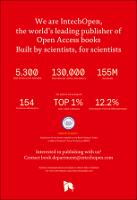Chapter Clinical Trials in Paediatrics — Regulatory and Methodological Aspects
| dc.contributor.author | Ceci, Adriana | |
| dc.contributor.author | Giannuzzi, Viviana | |
| dc.contributor.author | Bonifazi, Donato | |
| dc.contributor.author | Felisi, Mariagrazia | |
| dc.contributor.author | Bonifazi, Fedele | |
| dc.contributor.author | Ruggieri, Lucia | |
| dc.date.accessioned | 2021-06-02T10:07:35Z | |
| dc.date.available | 2021-06-02T10:07:35Z | |
| dc.date.issued | 2015 | |
| dc.identifier | ONIX_20210602_10.5772/60611_248 | |
| dc.identifier.uri | https://library.oapen.org/handle/20.500.12657/49134 | |
| dc.description.abstract | The photoautotrophic cyanobacterium Synechocystis PCC6803 has received much attention as a model photosynthetic cell factory for the production of a range of important biotech products. The biomass remaining from this activity may then have further utility in processes such as metal bioremediation. In addition Synechocystis being an inhabitant of many natural aquatic environments is seen as an environmentally friendly alternative to using chemical precipitation methodologies for metal remediation. Synechocystis produces a range of extracellular polysaccharide substances (EPS) that can undergo modification as a function of culture age and growth nutrients which have been implicated in metal biosorption. Many studies have demonstrated that high levels of charged groups present in EPS are important in forming polymeric matrices with metallic ions allowing their biosorption. Genetic studies has revealed genes involved in such metal binding indicating that EPS can be modified for potential enhancement of binding or modification of the types of metals bound. The utility of metal binding to live and dead biomass of Synechocystis has been demonstrated for a range of metals including Cr(VI), Cd(II), Cu(II), Pb(II), Sb, Ni(II), Mn(II), Mn(IV), As(III), As(V), Cs and Hg. The potential of using Synechocystis as a biosorption platform is discussed. | |
| dc.language | English | |
| dc.subject.classification | bic Book Industry Communication::R Earth sciences, geography, environment, planning::RB Earth sciences::RBK Hydrology & the hydrosphere | |
| dc.subject.other | Synechocystis, EPS, metal biosorption, metal binding, metal remediation | |
| dc.title | Chapter Clinical Trials in Paediatrics — Regulatory and Methodological Aspects | |
| dc.type | chapter | |
| oapen.identifier.doi | 10.5772/60611 | |
| oapen.relation.isPublishedBy | 09f6769d-48ed-467d-b150-4cf2680656a1 | |
| oapen.relation.isFundedBy | FP7-HEALTH-2010-single-stage | |
| oapen.grant.number | 261060 | |
| oapen.grant.acronym | GRIP |

